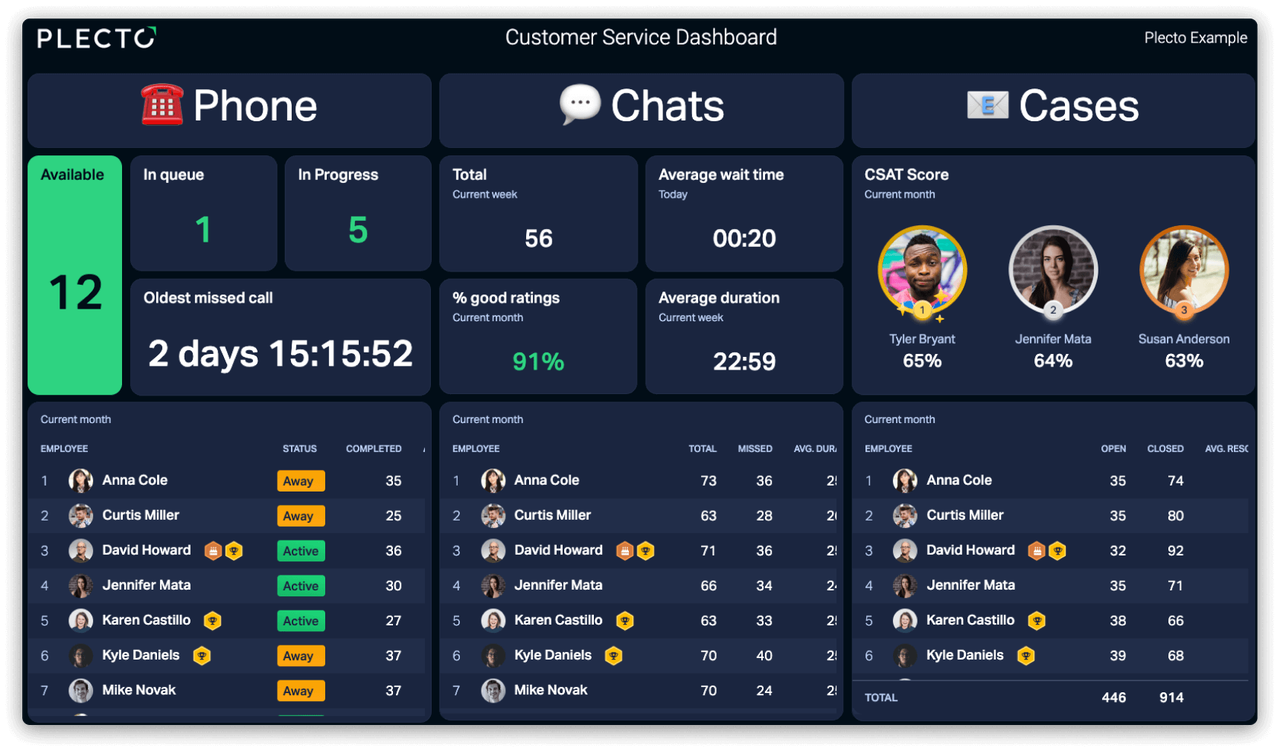Customer onboarding is often a customer’s first touchpoint after making a purchase, and it sets the tone for the rest of their experience with the company and its product. A smooth onboarding process is crucial to customer satisfaction – and these nine customer onboarding best practices will help your company get it right.
What is customer onboarding?
Let’s start by answering the question, “What is customer onboarding?”
Customer onboarding is the process that new customers go through between the time they’ve made the purchase and used it for the first time. With a successful onboarding process, new customers quickly recognize the product’s value – and experience a quick win that boosts their confidence and reinforces that they’ve made the right choice.
Many onboarding processes use a combination of the following tools as standalone content or as part of a guided process to instruct customers along the way.
- Product tours
- Intros to core features and functionality
- Step-by-step videos and tutorials
- A knowledge base containing user guides, FAQs, etc.
Why is customer onboarding so important?
First impressions are lasting impressions, and onboarding is often a customer’s first real experience with a company. It’s an opportunity to demonstrate value, establish a good relationship, and secure long-term customer loyalty.
Over 90% of customers feel that companies could improve their onboarding processes – and 86% say they’d be more likely to stay loyal to a company that invests in onboarding that makes them feel confident in using the product. Onboarding is often overlooked, so creating a seamless onboarding process is a potentially easy way for companies to differentiate themselves from their competitors.
9 Customer Onboarding Best Practices
Customer onboarding is an extension of the sales process, the first real step in the customer journey, and an opportunity to build a lasting relationship with each new customer. Many companies invest heavily in customer acquisition, but it could be a wasted effort if they don’t develop a supportive onboarding process that reinforces the product’s value proposition early on.
Creating a great onboarding process doesn’t need to be an arduous task. These nine customer onboarding best practices will help you to develop an effective process for getting new customers onboarded while improving the probability of them becoming lifetime users – and maybe even brand ambassadors!
Before You Begin Onboarding
If you don’t currently have an onboarding process, these three customer onboarding best practices can help you get started with developing one.
1. Assign ownership of the process
Successful onboarding requires the same attention as your company’s sales and marketing strategies. For small companies with a simple product, a customer success manager might oversee customer onboarding, while larger companies often have teams dedicated to this purpose. If you’re starting from scratch, a task force that understands the company’s main customer profiles could develop the process and then hand over responsibility for its tactical execution.
2. Understand new customers’ needs
Companies often try to cover every product feature during onboarding, but the primary goal should be to get each user up to speed as quickly as possible while highlighting the features and benefits that are most relevant to their needs. If your sales department works with personas or sharp segmentation, use this information to design an onboarding process in which each customer type experiences a quick win without confusion or getting lost in the details. A well-designed onboarding process provides the right information and support at the right times by telling customers exactly what they need to know when they need to know it.
If your sales department can’t provide customer profiles, consider questions like these to help you identify your main customer types:
- Who are your typical customers and why do they need your product?
- What are they trying to accomplish with your product?
- What will “success” look like to them?
- Why might they stop using your product?
- What are the main reasons your customers churn?
Build your first dashboard.
Start your 14-day free trial today

3. Set measurable onboarding goals
Demonstrating value early on is a key component of a successful onboarding process. Do this by defining some measurable short-term goals that align with promises made during the marketing and sales process. Then design the onboarding process around tasks or activities to help customers achieve these goals and quickly see value. If you work with key customer profiles, it will be easier to design an onboarding process with multiple tracks that address each profile and its needs.
How to Design a Successful Onboarding Process
As you develop your onboarding process, evaluate how well it addresses your customers’ needs and concerns and whether it reinforces your product’s value. Following are five customer onboarding best practices to help you create an autonomous onboarding process that makes a great impression and reinforces that the customer has made the right choice.
4. Use email to welcome new customers and point them in the right direction
The first touchpoint in the onboarding process is an opportune time to start building loyalty. An email congratulating the customer on their purchase and thanking them for choosing your product is a good place to start. This is also a prime opportunity to share links to “getting started” tutorials, videos, and other information to help them get the most out of their purchase. Edit relentlessly, only sharing information that’s immediately relevant – and end the email by encouraging the customer to take a specific action that will get them started in the onboarding process.
5. Provide great video content
Helpful and informative video content is an easy way to give customers what they want while getting them quickly up to speed and feeling positive about their purchase. A 2020 survey done by Wyzowl showed that consumers love video content – and it’s something they look for as they familiarize themselves with new products:
- 97% said that videos are an effective way to welcome and educate new customers.
- 69% said that more video content could improve onboarding processes.
- 74% said they’ve watched a video to better understand how to use a new app or website.
- 65% cited videos as their preferred way to learn how to use a new product or service.

6. Show your customers what to do
While most customers will be pretty familiar with your product by the time you’re onboarding them, this is likely to be their first hands-on experience – and it can be intimidating for some. Showing exactly what needs to be done can help ease them into it. Consider creating videos that provide visual instructions for completing critical tasks. If there’s a digital component to the product setup (e.g., an app configuration for small electronics), in-app instructions can offer helpful point-of-task information to guide customers through their first time completing a task. Always provide the option to pause the onboarding process or skip parts that aren’t crucial.
7. Use positive reinforcement
Take a cue from fitness and learning apps by giving your customers a quick win! This is a great way to boost their confidence as they become familiar with your product. A popular way of doing this is to show customers where they are in the onboarding process, for example by using a status bar to visualize the percentage of onboarding steps they’ve completed or a task list that gives them the satisfaction of checking off tasks as they complete them. This supports our previous suggestion by showing customers what to do and how far along they are in the process, which is helpful but also motivating and likely to keep them engaged in the process – and with the product.
8. Provide ample help tools
Today’s customers readily accept the use of chatbots and self-service support tools, making it easier than ever for companies to provide 24/7 onboarding support. Offer easy point-of-use access to these and other support tools – everything about the onboarding process should be as easy as possible.
Develop a Better Onboarding Process
You can always build a better mousetrap when it comes to onboarding new customers, so the last of our customer onboarding best practices deals with continuous improvement.
9. Ask for feedback and update your onboarding process accordingly
Your onboarding process might not be as good as you think. Seek constant feedback from newly onboarded customers while the process is still fresh in their minds. Asking a few targeted questions at the end of the process could highlight blind spots and help you make meaningful adjustments. Keeping an eye on stats like the percentage of users who abandon the onboarding process, how many users seek extra support (and for what), and the average time to complete the onboarding process can provide useful data-driven insights into how well your process is working.
Use a Dashboard to Track Onboarding Metrics
Tracking the right metrics can give valuable insights into how customers feel about your company’s onboarding process. Plecto’s real-time dashboards are an excellent tool for getting an on-demand overview of key metrics that can help to ensure that you’re providing the onboarding experience that customers want. For more ideas to help with customer retention, check out these 10 tips to reduce churn and improve customer retention – and our ultimate guide to customer loyalty.
Sign up for a free 14-day trial of Plecto and take an important step toward improving how you onboard new customers!




